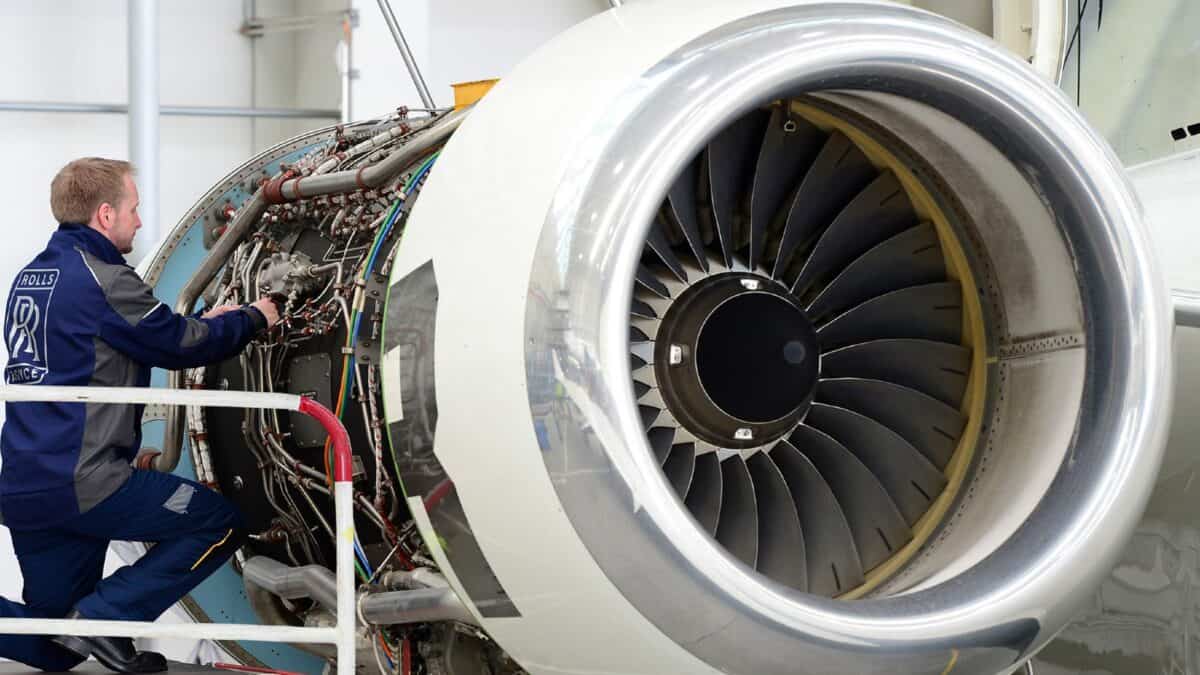Image source: Rolls-Royce plc
I’ve long believed the Rolls-Royce Holdings (LSE:RR.) share price to be expensive. It appears to reflect anticipated growth in the company’s earnings that has yet to be realised.
The summary of brokers’ forecasts on the company’s own website shows expected earnings per share (EPS) for the year ending 31 December 2027 (FY27) of 25.9p. With a current (20 September) share price of 525p, this implies a forward price-to-earnings (P/E) ratio of 20.2.
To me, that seems quite sensible for an engineering-cum-technology group.
But there’s a long way to go. In FY23, the company reported EPS of 13.75p. Therefore, its current P/E ratio is an eye-watering 38.2.
A 62% increase in earnings over three years is a challenging target. But it wouldn’t surprise me if the group achieved it. The company’s bounce back from the pandemic — when it had to raise billions to survive — has been remarkable.
Daring to be different
By 2027, it’s likely that we will know whether the company’s diversification into small modular reactors (SMRs) — factory-built nuclear power stations — is likely to be a success.
Although it’s not until 2030 before the first ones are likely to be operational, in three years’ time it should have received sufficient orders or expressions of interest — and successfully built some prototypes — to know whether SMRs are going to help continue the Rolls-Royce growth story.
Personally, I think they could have a big impact.
Going nuclear
According to the International Atomic Energy Agency, the installed base for nuclear power could rise from 371GW to 890GW, by 2025.
With electricity demand currently increasing at twice the rate of all energy, additional capacity must come from somewhere. And SMRs are likely to play a large part in the world’s future energy generation.
That’s because larger conventional power plants have fallen out of fashion. Their reputation for huge cost over-runs means operators are looking for less expensive, quicker-to-build alternatives. When Hinkley Point C (Somerset) is finished, it’s expected to be £34bn over budget.
A huge opportunity
An additional 519GW of nuclear power is equivalent to over 1,500 SMRs.
With an estimated retail price of $1bn each, it’s a potentially huge market. And Rolls-Royce could benefit enormously. If all goes to plan, not only could it make money from the units themselves but there will also be revenue generated from maintenance contracts, spare parts, and operating agreements.
Of course, the technology has yet to be proven. And there are other well-funded competitors. These include a Wyoming-based project backed by Warren Buffett and Bill Gates.
Also, I don’t think its sensible buying shares today in the hope that a new market will come off in six years’ time. Having said that, it’s the sort of timeframe some investors look at when investing in pre-revenue start-ups.
However, unlike a recently formed company seeking to develop a new technology, Rolls-Royce has the advantage of having been in existence for 118 years. Its legacy business is able to provide the cash required to develop its nuclear programme.
But I come back to my original point. Based on what I know today, the shares look expensive to me. However, I’m going to watch with interest how the company gets on with its SMRs. The share price could start to explode if everything works out.
Credit: Source link













